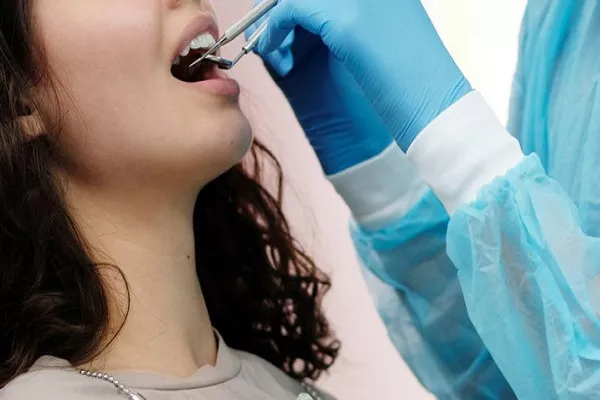A dazzling smile is often associated with confidence and good oral health. However, teeth discoloration is a common concern that affects many individuals, causing yellow or stained teeth. This discoloration can result from various factors, including lifestyle choices, aging, and certain foods and beverages. In this article, we explore the causes of teeth discoloration, effective remedies, and professional treatments to achieve white teeth and boost self-confidence.
Understanding the Causes of Teeth Discoloration
Before exploring ways to whiten teeth, it is crucial to understand the causes of teeth discoloration:
Poor Dental Hygiene: Inadequate brushing and flossing can lead to the accumulation of plaque and tartar, causing teeth to appear yellow or stained.
Food and Beverages: Consuming staining foods and beverages, such as coffee, tea, red wine, and dark-colored fruits, can leave stubborn stains on teeth over time.
Tobacco Use: Smoking and using tobacco products introduce nicotine and tar to the teeth, resulting in severe discoloration.
Aging: As we age, the outer layer of enamel on our teeth naturally wears down, exposing the yellowish dentin underneath.
Medications: Certain medications, like antihistamines and antipsychotics, can cause teeth discoloration as a side effect.
Effective Ways to Whiten Yellow Teeth
Improve Dental Hygiene
Maintaining good oral hygiene is the foundation for achieving and preserving white teeth:
a. Brushing: Brush your teeth at least twice daily for two minutes using fluoride toothpaste and a soft-bristled toothbrush. Pay attention to each tooth‘s surface, ensuring a thorough clean.
b. Flossing: Regular flossing removes plaque and food particles from between teeth, reducing the risk of yellowing.
c. Mouthwash: Incorporate an alcohol-free mouthwash into your routine to reduce bacteria and maintain oral freshness.
Limit Staining Foods and Beverages
While it may be challenging to eliminate staining foods and drinks entirely, moderating their consumption can make a significant difference:
a. Use a Straw: When consuming beverages like coffee, tea, or soda, use a straw to minimize contact with your teeth.
b. Rinse Your Mouth: After eating or drinking staining substances, rinse your mouth with water to wash away pigments.
c. Chew Sugarless Gum: Chewing sugarless gum after meals stimulates saliva flow, which can help wash away food particles and neutralize acids.
Quit Tobacco Use
Quitting smoking and tobacco use not only benefits overall health but also prevents further teeth discoloration and improves the chances of achieving white teeth.
Teeth Whitening Products
Over-the-counter teeth whitening products, such as whitening toothpaste, strips, and gels, can help remove surface stains and brighten teeth to some extent. However, their effectiveness may vary, and it is essential to follow the instructions carefully to avoid potential side effects.
Natural Remedies
Several natural remedies are believed to have teeth-whitening properties, but their efficacy may vary among individuals:
a. Baking Soda: Brushing with a paste made from baking soda and water can gently remove surface stains.
b. Hydrogen Peroxide: Gargling with a diluted hydrogen peroxide solution can help whiten teeth, but it should be used sparingly and with caution.
c. Oil Pulling: Swishing coconut or sesame oil in your mouth for a few minutes daily is thought to reduce bacteria and improve oral health.
Professional Teeth Whitening Treatments
For those seeking more significant and immediate results, professional teeth whitening treatments performed by dentists are highly effective:
In-Office Teeth Whitening:In-office teeth whitening, also known as chairside bleaching, is a popular and quick procedure. The dentist applies a powerful bleaching agent to the teeth and activates it with a special light or laser. This process efficiently breaks down stains and discoloration, leaving teeth several shades whiter in just one visit.
At-Home Teeth Whitening:At-home teeth whitening is an alternative option provided by dentists. Custom-made whitening trays and professional-grade bleaching gel are given to the patient to use at home. The trays are worn for a specified period each day for several weeks, gradually whitening the teeth.
It’s important to note that professional teeth whitening treatments can lead to temporary tooth sensitivity, which typically subsides after treatment.
Conclusion
Achieving white teeth from a yellow or stained condition is possible with the right approach and commitment. By improving dental hygiene practices, moderating the consumption of staining foods and beverages, quitting tobacco use, and exploring teeth whitening options, individuals can enjoy a brighter and more confident smile. For those seeking immediate and more profound results, professional teeth whitening treatments performed by dentists offer an effective solution. Before embarking on any whitening journey, it is advisable to consult with a dental professional to determine the most suitable approach for individual needs. With the proper care and maintenance, anyone can enjoy a beautiful, white smile that exudes self-assurance and dental well-being.
Related Topics:



























